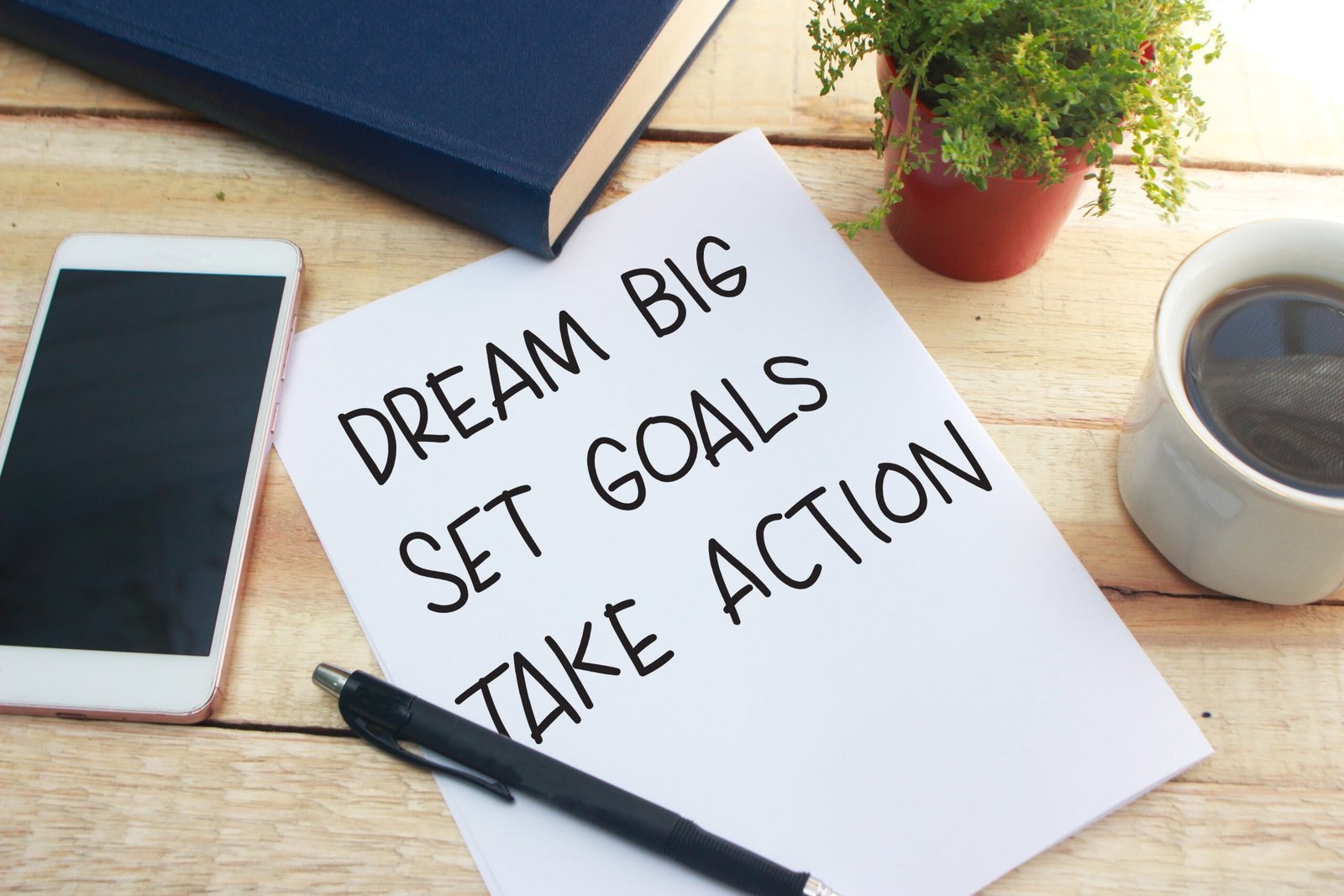Looking to improve productivity? Let’s dive in:
Maintaining mental focus is one of the most difficult tasks we face today. Distractions are swirling all around us, from our devices, our environments, and our wandering thoughts.
With all these distractions, it’s clear we need a focus system to succeed and thrive. But what do we need to do? What steps do we need to take?
It’s important to know what your goals are, have a plan, and set up a daily routine. Here are seven simple ways to help you be more productive:
Set goals
Make a list
Do the difficult tasks first
Work on one task at a time
Reduce distractions
Take breaks
Have a routine
Let’s take a closer look:
Step 1. Set Goals
I like to understand the big picture and work my way back to the details. When I understand the big picture, I can visualize how the smaller pieces fit together to fill the narrative. It’s kind of like looking at the jigsaw puzzle picture to understand how the pieces fit together.
When setting goals, I think about the purpose of what I’m doing and what I intend to achieve, then work backward from the project-specific goals, looking at the monthly, weekly, and daily goals I need to complete the vision.
Then I work forward, setting reasonable daily goals, which lead to fulfilling weekly, monthly, and project-specific goals. When you plan out your goals for the day ahead of time, you don’t have to spend valuable time and energy worrying about what you need to do each day.
Step 2. Make a List
I like checklists, and I’m not afraid to admit it. I like the satisfaction I feel when I get to check a task off my list. I like it to remain visible so I can see all I’ve achieved that day. It also allows me to remain organized if I need to jump from one task to another throughout the day.
Most importantly, the less time I spend having to think about what I need to accomplish, the more I get done.
Step 3. Do the Difficult Tasks First
This may seem counterintuitive. It’s not.
You may be thinking that if you start with the easier tasks, you’ll get more of them finished and feel better about your output for the day.
The truth is, you only have a certain amount of energy and focus stored up for the day.
If you start with the hardest tasks, you’ll have the focus and determination to finish them. Also, it takes less energy to complete easier tasks, so they are best worked on when your energy is lower.
Step 4. Focus on One Task at a Time, but…
To multitask or not to multitask? The great debate!
They say you cannot properly focus if you are multitasking. That you need to finish one task before starting another. This is true if you’re trying to accomplish a variety of dissimilar tasks requiring the same senses, at the same time. However, I do think it’s possible to work on multiple projects without completing one first.
I often find myself running into difficulties finishing a particular task. Instead of getting frustrated and forcing myself to continue to the point of mental, physical, and emotional exhaustion, I’ll jump from one project to another to give myself time to breathe.
Focus on one task at a time, but don’t force yourself to finish something you’re struggling with when there are other tasks you can be accomplishing. It’s a more productive approach.
Step 5. Reduce Distractions
My life is full of distractions. I work from home in a converted dining room. I have a wife, four kids (ages nine, three, and one), and a labrador puppy. My wife works part-time, and the three and one-year-old kids are home with me when she does. They are also often home with me when she isn’t working. It is imperative that I find a way to minimize distractions. A couple of things I do are turn off notifications and use noise-canceling headphones.
Step 6. Take Breaks
As I write this, I’m getting tired, losing focus, and having a difficult time getting the words out. I’m going to take a break and come back to this in a bit.
Okay, I’m back.
Taking breaks is an important part of maintaining focus because the brain can only concentrate on a task for a limited amount of time before tiring. Your mind also needs time to absorb the information you’ve been uploading.
Of course, the best time for breaks depends on a number of things, starting with you. Other factors include workload, quality and length of sleep, energy levels, mental focus, stress levels, time of day, and type of work.
Step 7. Have a Routine
I work in blocks of time. I get up before the rest of my family, about 5:30, drink water, and do a very short stretching and bodyweight workout session. I then get to work right away. I work for about 1.5 hours, then get my nine-year-olds up for school. I make their lunch and have coffee before taking them to school. When I get home, I have breakfast and then get back to work for another 2 hours, move around, have lunch, and hang out with the kids. Then I get back at it for a few more hours before picking the twins up from school. I then hang out with the family until 8, then get another hour in before shutting down at 9 and getting to sleep by 10.
Finale
This is what works for me. Let me know what works for you or what you struggle with. If you need some guidance, reach out, and let’s chat. I’m here to help.
